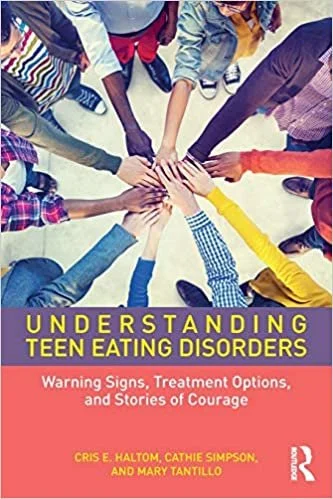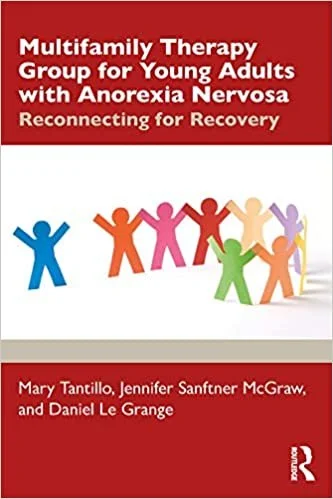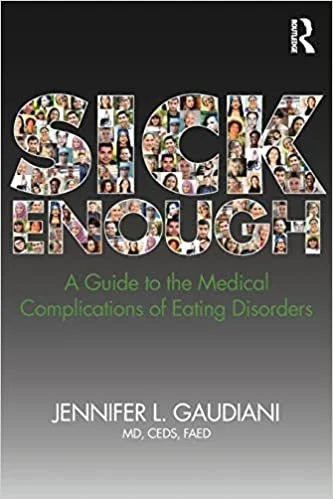Education & Resources
Facts About Eating Disorders
-
At least 28.8 million Americans will suffer from an eating disorder in their lifetime.
-
Eating disorders affect people of all ages, genders, races, ethnicities, and socioeconomic groups.
-
Eating disorders have the highest mortality rate of any psychiatric illness outside of opioid addiction.
-
Someone dies as a direct result of an eating disorder every 52 minutes.
-
Anorexia is the third most common chronic illness among adolescents.
-
20% of people suffering from anorexia will prematurely die from complications related to their eating disorder, including suicide and heart problems.
-
The mortality rate associated with anorexia nervosa is 12 times higher than the death rate associated with all causes of death for females 15-24 years old.
-
There is little U.S. federal funding for research on eating disorders. According to the Academy for Eating Disorders, eating disorders research is allocated about $28 million per year, whereas mental illnesses like Depression ($328 million/year), Schizophrenia ($352 million/year), or ADHD ($105 million/year) receive up to 13 times that amount.
-
Although eating disorders have the highest mortality rate of any mental disorder, the mortality rates reported on those who suffer from eating disorders can vary considerably between studies and sources. Part of the reason why there is a large variance in the reported number of deaths caused by eating disorders is that those who suffer from an eating disorder may ultimately die of heart failure, organ failure, malnutrition, or suicide. Often, the medical complications of death are reported instead of the eating disorder that compromised a person’s health.
Eating Disorders Statistics
-
General:
• Almost 50% of people with eating disorders meet the criteria for depression.
• Only 1 in 10 men and women with eating disorders receive treatment. Only 35% of people that receive treatment for eating disorders get treatment at a specialized facility for eating disorders.
• Up to 24 million people of all ages and genders suffer from an eating disorder (anorexia, bulimia, and binge eating disorder) in the U.S.
• Eating disorders have the highest mortality rate of any mental illness
-
Students:
• Anorexia is the third most common chronic illness among adolescents.
• 91% of women surveyed on a college campus had attempted to control their weight through dieting. 22% dieted “often” or “always.”
• 25% of college-aged women engage in bingeing and purging as a weight-management technique.
• Over one-half of teenage girls and nearly one-third of teenage boys use unhealthy weight control behaviors such as skipping meals, fasting, smoking cigarettes, vomiting and taking laxatives.
• In a survey of 185 female students on a college campus, 58% felt pressure to be a certain weight, and of the 83% that dieted for weight loss, 44% were of normal weight.
-
Men:
• It is estimated that 33% of individuals with eating disorders are men
• Men are less likely to seek treatment for eating disorders because of the perception that they are “women’s diseases.”
• Among gay men, nearly 14% appeared to suffer from bulimia and over 20% appeared to be anorexic.
Media, Perception, Dieting:
• 95% of all dieters will regain their lost weight within 5 years.
• 35% of “normal dieters” progress to pathological dieting. Of those, 20-25% progress to partial or full syndrome eating disorders.
• The body type portrayed in advertising as the ideal is possessed naturally by only 5% of American females.
• 47% of girls in 5th-12th grade reported wanting to lose weight because of magazine pictures.
• 69% of girls in 5th-12th grade reported that magazine pictures influenced their idea of a perfect body shape.
• 42% of 1st-3rd grade girls want to be thinner.
• 81% of 10-year-olds are afraid of being fat.
-
For Women:
• Women are much more likely than men to develop an eating disorder. Only an estimated 5 to 15 percent of people with anorexia or bulimia are male.
• An estimated 0.5 to 3.7 percent of women suffer from anorexia nervosa in their lifetime. Research suggests that about 1 percent of female adolescents have anorexia.
• An estimated 1.1 to 4.2 percent of women have bulimia nervosa in their lifetime.
• An estimated 2 to 5 percent of Americans experience binge-eating disorder in a 6-month period.
• About 50 percent of people who have had anorexia develop bulimia or bulimic patterns.
• 20% of people suffering from anorexia will prematurely die from complications related to their eating disorder, including suicide and heart problems.
-
Athletes:
• Risk Factors: In judged sports – sports that score participants – prevalence of eating disorders is 13% (compared with 3% in refereed sports).
• Significantly higher rates of eating disorders were found in elite athletes (20%), than in a female control group (9%).
• Female athletes in aesthetic sports (e.g. gymnastics, ballet, figure skating) were found to be at the highest risk for eating disorders.
• A comparison of the psychological profiles of athletes and those with anorexia found these factors in common: perfectionism, high self-expectations, competitiveness, hyperactivity, repetitive exercise routines, compulsiveness, drive, a tendency toward depression, body image distortion, pre-occupation with dieting and weight.
Free Resources
Check Out Our Mental Health and Eating Disorder Podcast!
Once Shattered: Picking up The Pieces a Mental Health & Eating Disorder Podcast
BECAUSE EVERYONE’S MENTAL HEALTH MATTERS










